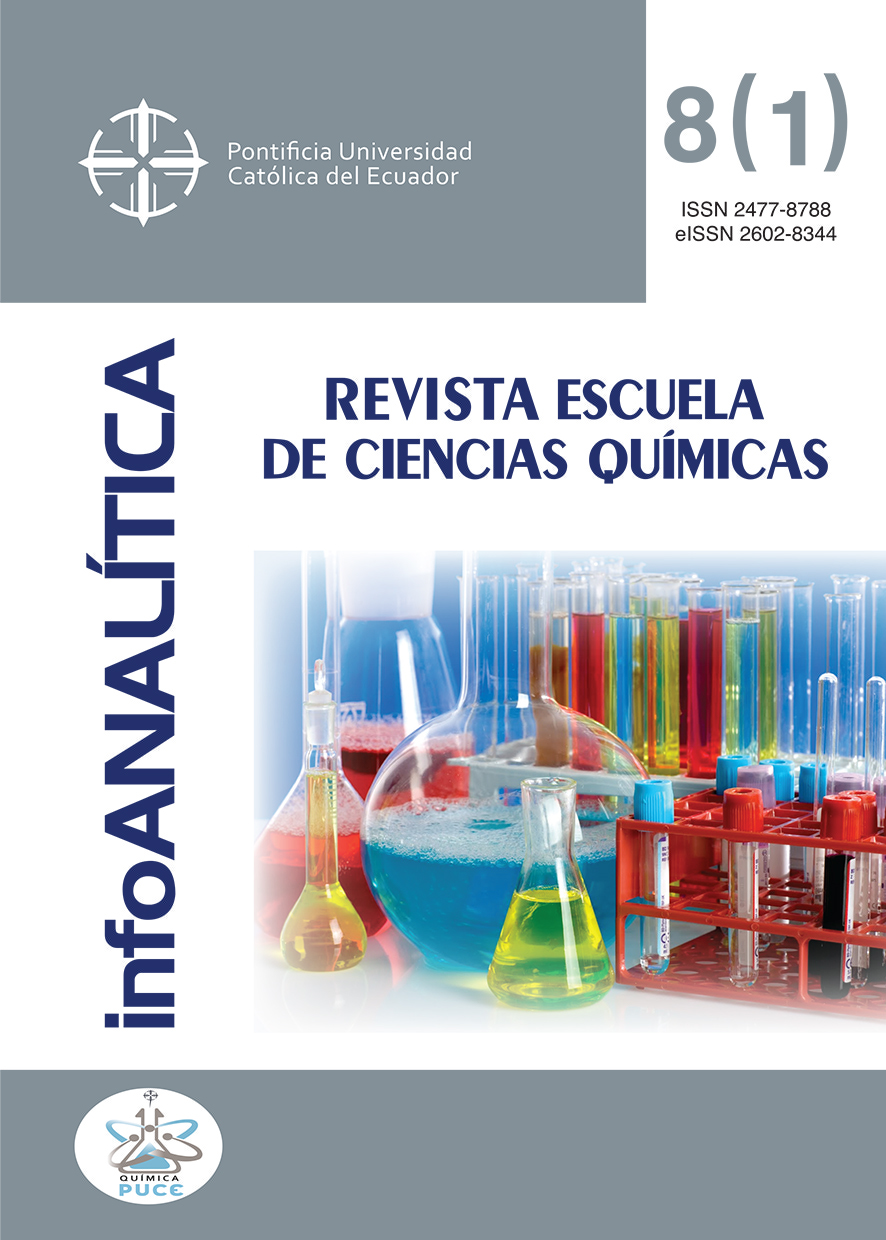ANÁLISIS DE REACCIÓN NUCLEAR (NRA) Y EMISIÓN DE RAYOS γ INDUCIDOS POR PARTÍCULAS (PIGE)
Main Article Content
Abstract
In this review article, the operation of two modern nuclear techniques is explained: nuclear reaction analysis (NRA) and the emission of γ-induced particles (PIGE) that have arisen from the need to analyze light elements. Advantages such as high sensitivity and disadvantages such as the difficulty of interpreting their spectra are also mentioned. Furthermore, a review of the applications where several authors have developed research papers is included. Finally, there's a summary of what is expected of the technique in the years to come.
Downloads
Download data is not yet available.
Article Details
Section
Review
- The authors agree to respect the academic information of other authors, and to assign the copyrights to the journal infoANALÍTICA, so that the article can be edited, published and distributed.
- The content of the scientific articles and the publications that appear in the journal is the exclusive responsibility of their authors. The distribution of the articles published in the infoANALÍTICA Journal is done under a Creative Commons Reconocimiento-CompartirIgual 4.0 Internacional License.
References
Acharya, R. & Pujari, P. (2018). Potential of conventional and internal monostandard NAA and PGNAA and PIGE in forensic sciences: An overview. Forensic Chemistry
Asking, L., Swietlicki, E. & Garg, M. (1987). PIGE analysis of sodium in thin aerosol samples. Nuclear Instruments and Methods in Physics Research B, #22, pp. 368-371
Botsoa, J., Sauvage, T., Courtois, D., De Sousa, D. & Barthe, M. (2018). Study of Nitrogen content in HPHT by nuclear reaction analysis. Nuclear Instruments and Methods in Physics Research B
Carvalho, M., Karydas, A., Casaca, C., Zarkadas, Ch., Paradellis, Th., Kokkoris, M., Nsouli, B. & Cunha, A. (2001). Nuclear Instruments and Methods in Physics Research B, #179, pp. 561-567
Ene, A. (2004). Improvement of sensitivity in PIGE analysis of steels by neutron-gamma concidences measurement. Nuclear Instruments and Methods in Physics Research B, #222, pp. 228-234
Grassi, n., Migliori, P., Mando, P. & Calvo del Castillo, (2004). Identification of lapiz-lazuli pigments in pait layers by PIGE measurements. Nuclear Instruments and Methods in Physics Research B, #220, pp. 48-52
Mateus, R., Jesus, A., Reis, M. & Ribeiro, J. (2006). Quantitative analysis of light elements in aerosol samples by PIGE. Nuclear Instruments and Methods in Physics Research B, #249, pp. 784-788
Mateus, R., Jesus, A., Fonseca, M., Luis, H. & Ribeiro, J. (2007). The sensitivity of the PIGE analytical technique. Nuclear Instruments and Methods in Physics Research B, #264, pp. 340-344
Rangel, P., de Almeida, M. & Medina, N. (2016). Improvements in the PIGE technique via gamma-ray angular distribution. Microchemical Journal, #126, pp. 287-295
Verma, H. (2007). Atomic and Nuclear Analytical Mössbauer, XPS, NAA and Ion-Beam Spectroscopic Techniques. Springer, Berlin, pp. 269-293
Yamamoto, H., Nomachi, M., Yasuda, K., Iwami, y., Ebisu, S., Yamamoto, N., Sakai, T. & Kamiya, T. (2003). Fluorine mapping of teeth treated with fluorine-releasing compound using PIGE. Nuclear Instruments and Methods in Physics Research B, #210, pp. 388-394
Yasuda, K., Hai, V., Nomachi, M., Sugaya, Y. & Yamamoto, H. (2007). In-air micro-PIGE measurement system for fluorine analysis. Nuclear Instruments and Methods in Physics Research B, #260, pp. 207-212
Asking, L., Swietlicki, E. & Garg, M. (1987). PIGE analysis of sodium in thin aerosol samples. Nuclear Instruments and Methods in Physics Research B, #22, pp. 368-371
Botsoa, J., Sauvage, T., Courtois, D., De Sousa, D. & Barthe, M. (2018). Study of Nitrogen content in HPHT by nuclear reaction analysis. Nuclear Instruments and Methods in Physics Research B
Carvalho, M., Karydas, A., Casaca, C., Zarkadas, Ch., Paradellis, Th., Kokkoris, M., Nsouli, B. & Cunha, A. (2001). Nuclear Instruments and Methods in Physics Research B, #179, pp. 561-567
Ene, A. (2004). Improvement of sensitivity in PIGE analysis of steels by neutron-gamma concidences measurement. Nuclear Instruments and Methods in Physics Research B, #222, pp. 228-234
Grassi, n., Migliori, P., Mando, P. & Calvo del Castillo, (2004). Identification of lapiz-lazuli pigments in pait layers by PIGE measurements. Nuclear Instruments and Methods in Physics Research B, #220, pp. 48-52
Mateus, R., Jesus, A., Reis, M. & Ribeiro, J. (2006). Quantitative analysis of light elements in aerosol samples by PIGE. Nuclear Instruments and Methods in Physics Research B, #249, pp. 784-788
Mateus, R., Jesus, A., Fonseca, M., Luis, H. & Ribeiro, J. (2007). The sensitivity of the PIGE analytical technique. Nuclear Instruments and Methods in Physics Research B, #264, pp. 340-344
Rangel, P., de Almeida, M. & Medina, N. (2016). Improvements in the PIGE technique via gamma-ray angular distribution. Microchemical Journal, #126, pp. 287-295
Verma, H. (2007). Atomic and Nuclear Analytical Mössbauer, XPS, NAA and Ion-Beam Spectroscopic Techniques. Springer, Berlin, pp. 269-293
Yamamoto, H., Nomachi, M., Yasuda, K., Iwami, y., Ebisu, S., Yamamoto, N., Sakai, T. & Kamiya, T. (2003). Fluorine mapping of teeth treated with fluorine-releasing compound using PIGE. Nuclear Instruments and Methods in Physics Research B, #210, pp. 388-394
Yasuda, K., Hai, V., Nomachi, M., Sugaya, Y. & Yamamoto, H. (2007). In-air micro-PIGE measurement system for fluorine analysis. Nuclear Instruments and Methods in Physics Research B, #260, pp. 207-212

